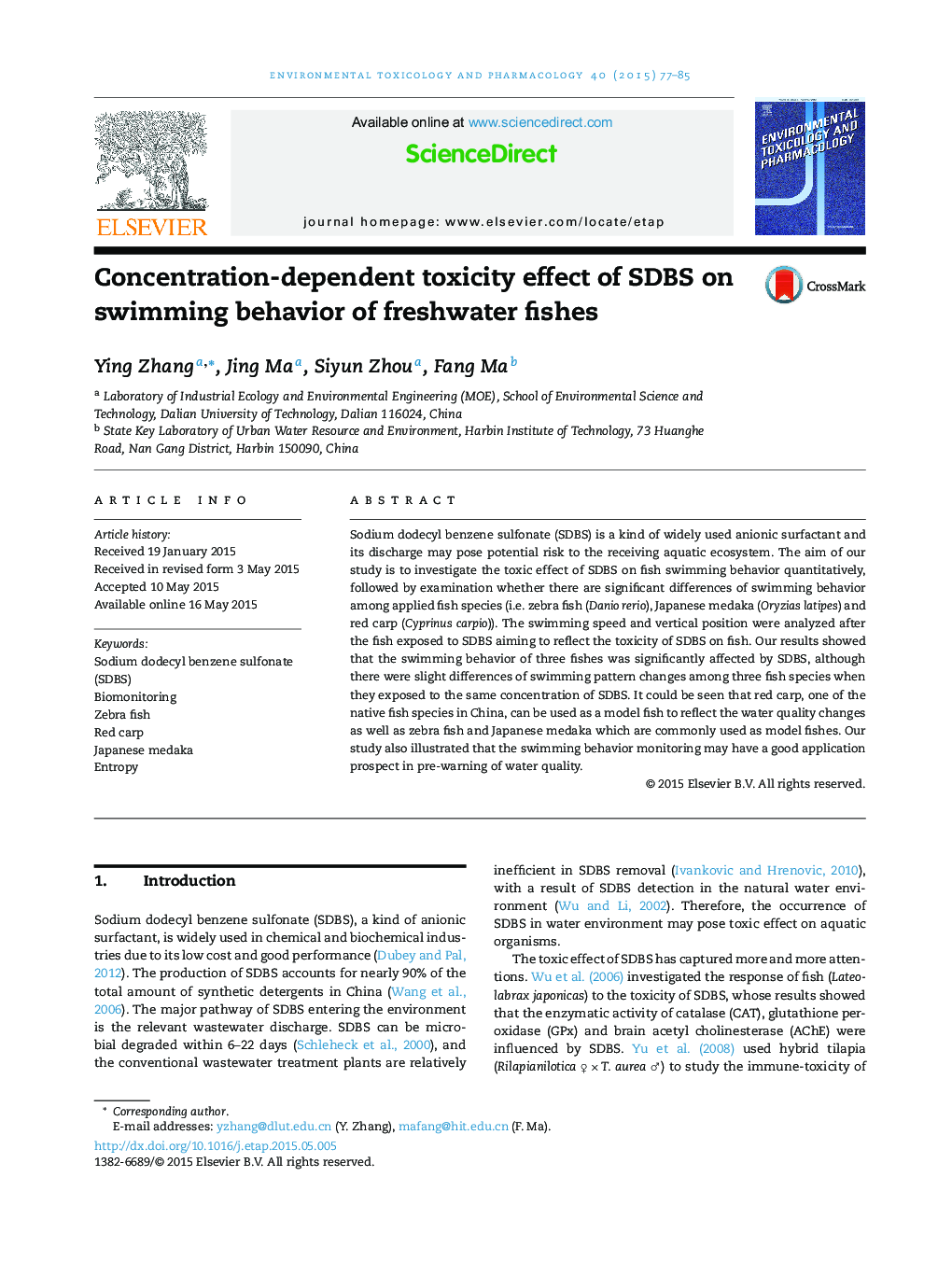| Article ID | Journal | Published Year | Pages | File Type |
|---|---|---|---|---|
| 2582955 | Environmental Toxicology and Pharmacology | 2015 | 9 Pages |
•Swimming behavior monitoring can be effective to demonstrate the toxicity of SDBS.•SDBS did influence the swimming behavior of three freshwater fish species.•Red carp is applicable for toxicity test, but not for real-time monitoring.
Sodium dodecyl benzene sulfonate (SDBS) is a kind of widely used anionic surfactant and its discharge may pose potential risk to the receiving aquatic ecosystem. The aim of our study is to investigate the toxic effect of SDBS on fish swimming behavior quantitatively, followed by examination whether there are significant differences of swimming behavior among applied fish species (i.e. zebra fish (Danio rerio), Japanese medaka (Oryzias latipes) and red carp (Cyprinus carpio)). The swimming speed and vertical position were analyzed after the fish exposed to SDBS aiming to reflect the toxicity of SDBS on fish. Our results showed that the swimming behavior of three fishes was significantly affected by SDBS, although there were slight differences of swimming pattern changes among three fish species when they exposed to the same concentration of SDBS. It could be seen that red carp, one of the native fish species in China, can be used as a model fish to reflect the water quality changes as well as zebra fish and Japanese medaka which are commonly used as model fishes. Our study also illustrated that the swimming behavior monitoring may have a good application prospect in pre-warning of water quality.
